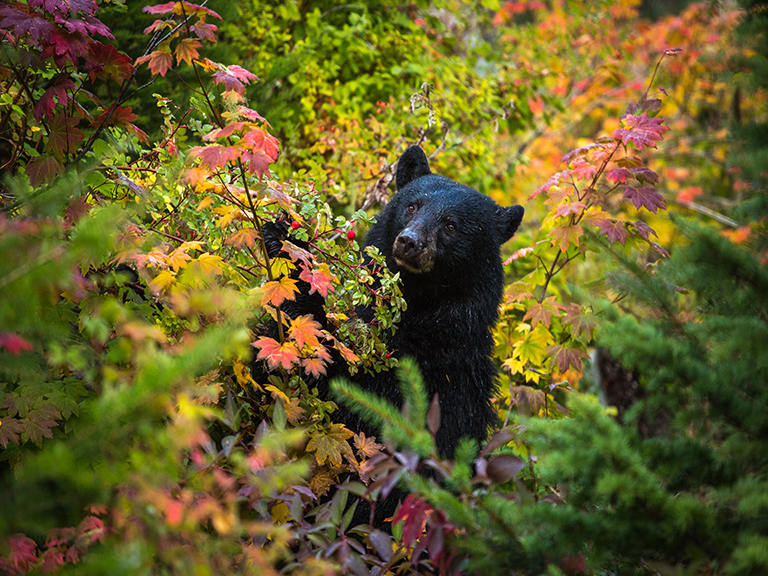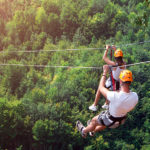What is UN World Wildlife Day? On December 20, 2013, the UNGA (United Nations General Assembly) created this United National International day to raise awareness for issues around the world that affect wildlife – including wildlife crimes, poaching, deforestation, climate change, habitat loss, and more. Always held on March 3, this educational holiday is a great opportunity for you to take a trip to the Smoky Mountains, get outside, take initiative, and learn more about the local flora and fauna. For 2025, the theme is Wildlife Conservation Finance: Investing in People and Planet.
Why March 3? March 3, 1973, is the birthday of CITES – the Convention on International Trade in Endangered Species of Wild Fauna and Flora. It’s an agreement between international governments aiming to look after the well-being of big cats, elephants, and other wildlife – ensuring international trade does not interfere with conservation efforts or endanger any animal species. With the awareness of the world through this agreement, they can fight against biodiversity loss, protect ecosystems, and work towards ecosystem restoration after habitat loss.
Thriving off tourism to the most visited national park in the country, Pigeon Forge and Gatlinburg are great examples of how the forests of the Great Smoky Mountains fuel jobs, inspire artworks, promote sustainability, and tie deeply into the culture. These Tennessee cities are ideal vacation destinations for educating yourself, your kids, and others about wildlife. You’ll have a blast spotting animals and plants in the national park.
Of course, the best way to celebrate World Wildlife Day is by viewing wildlife…in the wild (at a safe distance, of course)! But there are also some wonderful attractions in the Smokies dedicated to nature because we understand that the only way for many people to learn about nature is through educational opportunities such as these. We hope you enjoy exploring and learning more about wildlife in the Great Smoky Mountains!
On World Wildlife Day, we reflect on our responsibility to protect the magnificent diversity of life on our planet…Today and every day, let us all do our part to preserve natural habitats and build a thriving future for all living beings.
-Antonio Guterres, United Nations Secretary-General
You can learn more about World Wildlife Day at wildlifeday.org – including more about what we can do to help. Or you can follow them on social media to stay informed.
Animals in the Smoky Mountains
The Great Smoky Mountains of Pigeon Forge and Gatlinburg, Tennessee, are teeming with fascinating wildlife. Animals come in all shapes and sizes in this part of the world. In fact, there are about 65 different types of mammals, 67 fish species native to the area, 80+ kinds of reptiles and amphibians, and 200+ varieties of birds.
It may surprise you to know that the Great Smoky Mountains National Park is also known as the “Salamander Capital of the World,” with 30 species that make up an incredibly diverse group. This most-visited national park in the U.S. plays an important role in the world!
Many animals, such as the river otter, elk, and Peregrine Falcon, have also been successfully reintroduced into the park. Endangered species include the Smoky madtom (a type of catfish), Carolina northern flying squirrel, rusty-patched bumblebee, and Indiana brown bat. And if you visit in late May or early June, you might catch the famous synchronous fireflies that sync up their lighting patterns for a spectacular show you won’t find anywhere else!
List of Popular Animals in the Smoky Mountains
- White-tailed deer
- Elk
- Black bears
- Coyotes
- Foxes
- Bobcats
- Raccoons
- Beavers
- River otters
- Skunks
- Flying squirrels
- Brown bats
- Turkeys
- Owls
- Peregrine Falcons
- Rainbow trout
- Salamanders!
Black Bear Safety
Perhaps the most adorable and strongest animals in the Smoky Mountains, black bears are common to spot in the national park, Pigeon Forge, and Gatlinburg. So, it’s important to know what to do if you encounter a black bear. Do keep in mind attacks on humans are rare but possible. If attacked, always fight back (with any available object) and NEVER play dead.
If a black bear notices you but its behavior does not change, then just keep your distance and an eye on the bear as you move along. However, if the bear’s behavior does change upon noticing you (such as running toward you, swatting, or making loud noises), then proceed with caution because you are too close.
- Do not approach the bear.
- Slowly back away, keeping eyes on the bear.
- If the bear moves closer, change your direction.
- If the bear continues to follow you, stop and shout at it with aggression.
- If you’re in a group, act together and make yourselves look bigger (moving to higher ground can help).
- Throw rocks, sticks, and other non-food objects at the bear and/or use bear spray.
- If the bear is after your food, distance yourself from the food and slowly back away.
Wildflowers, Trees & Shrubbery in the Smokies
Early spring brings blooms, blossoms, and new life await for World Wildlife Day. Along with the many adorable bear cubs, fox kits, and otter pups, spring in the Smokies is an excellent opportunity to see wildflowers at their best and greenery finally poking through the dreary winter scenes in Pigeon Forge and Gatlinburg.
In the Great Smoky Mountains, there are 5 forest types with a combined 130+ tree species and 4,000+ varieties of plants, including 1,600+ flowering plants. Changes in elevation, temperature, geology, and rainfall determine the type of tree and plant life, and there are plenty of hiking trails and sightseeing spots to take it all in.
List of Common Plants in the Smoky Mountains
- Spring beauties
- Trilliums
- Violets
- Lillies
- Irises
- Geraniums
- Flame azaleas
- Maples
- Birches
- Hickories
- Cedars
- Magnolias
- Spruces
- Pines
- Oaks
- Hydrangeas
- Hollies
- Honeysuckles
- Roses
- Wild strawberries
Wildflower Pilgrimage
For a special treat, come back to visit during the Wildflower Pilgrimage — a week-long annual event in April or May where you can learn more about the vegetation in the national park with expert guides. Plus, you can pick up a few new skills along the way, including photography, journaling, identifying birds by their song, yoga, and wild landscape design.
Where to See Wildlife in the Smoky Mountains
Pictures are great, but there’s just something special about spotting wild animals and plants in the Great Smoky Mountains of Tennessee. Aside from enjoying the natural enchantment of the Smokies, looking for wildlife is a great way to make homeschooling or field trips a bit more fun for kids. Plus, Pigeon Forge and Gatlinburg are loaded with educational establishments that feature animals and plants from around the world!
Great Smoky Mountains National Park
Featuring 800+ miles of hiking trails, wildlife viewing opportunities in the national park are plentiful. First thing’s first, the best time to catch a glimpse of animals in the national park is in the early morning or late afternoon. You can wait by a trail to see if any animals pass by, take out your binoculars to scan the trees for birds, search for plants and wildflowers at different elevations, and visit freshwater sources (like waterfalls) to look for fish and otters.
Another great place to view wildlife in the national park, Cades Cove is a lovely valley area with plenty of open fields to spot white-tailed deer. You can take a leisurely scenic drive around the 11-mile loop, go for a hike, or cycle. Other common animals spotted here include coyotes, turkeys, raccoons, black bears, and groundhogs.
Animal Attractions in Pigeon Forge & Gatlinburg
While you need to be on the lookout for wildlife in the national park, animal attractions in Pigeon Forge and Gatlinburg give you a guaranteed opportunity to see wildlife up close. Plus, they showcase not only local critters that can be hard to find in the wild but also various species from around the globe, perfect for World Wildlife Day.
- Wildlife Encounter at Ober Gatlinburg
- Rainforest Adventures Discovery Zoo near Pigeon Forge
- Parrot Mountain & Gardens in Pigeon Forge
- Ripley’s Aquarium of the Smokies in Gatlinburg
A Cabin in Nature
Another place where you can view Pigeon Forge or Gatlinburg wildlife is at a cabin. Pigeon Forge TN Cabins offers secluded properties to immerse yourself in nature, as well as rentals with river, wooded, or mountain views that feature plants and animals. In fact, many of our guests have spotted black bears and their cubs passing by their cabin!
You can relax in the hot tub or a rocking chair on the deck while listening to the songs of local birds during the day and hooting owls at night. Keep an eye out for critters meandering nearby or flying across the mountains while sipping coffee in the mornings or wine in the evenings. Plus, a cabin is a great home base to return to after searching for wildlife in the national park or visiting animal attractions in town.
Pigeon Forge TN Cabins features 1-16 bedroom rentals that range from budget-friendly to luxury. Amenities include indoor swimming pools, home theaters, rec rooms with games, full kitchens, and king suites. When you’re ready to plan your wildlife adventure, book online or give us a call at 1.866.513.7885.


